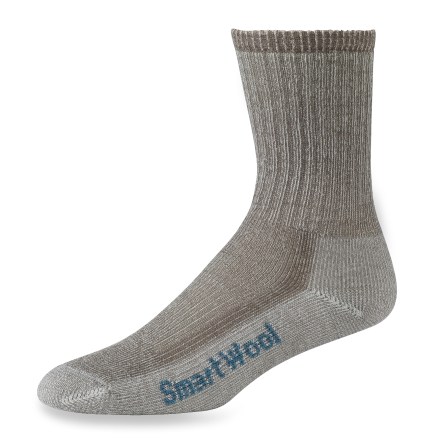For enjoyable and flawless hiking adventures, you should really consider buying a pair of proper good quality socks. There are many different types of socks: thick or thin, synthetic or wool, high length or short etc. With so many options, choosing the right one becomes a nightmare. Before buying a pair of hiking socks, ask yourself what are exactly your needs. Do you truly need a hiking sock or another type (mountaineering, skiing, running) will do a better service?
What is important in choosing right hiking socks?
Hiking socks are intended for single to multi-day hiking trips. They are suitable for abrasive and rocky terrains. Your criteria for evaluation should be comfort, warmth, drying speed, wicking and breathability, and durability. Appropriate materials and correct thickness of the sock will ensure your feet won’t freeze. If the sock fits right it will enable your feet to stay dry and will prevent blisters that might otherwise slow you down. The thinner the sock, the faster it will dry. It’s nearly impossible to get a fast-drying sock without compromising insulation. And also, depending on your wallet, the relation between the price and the durability of the sock is important too.
Materials
Sock material is important because it dictates how the sock will act in different weather conditions. Generally, you can choose between wool socks or synthetic ones.
Natural fibers
First of all, forget cotton! Cotton keeps the moisture close to the skin and it doesn’t keep your feet warm. Although it dries fast, the fibers in the cotton line up right next to each other so there is a little room left for capturing air and water.
On the other hand, a wool has fibers that are fairly porous. The air and moisture are captured between these fibers, and they behave as an insulator to maintain a warmer or cooler body temperature. That’s why wool socks are widely used among hikers.
If you want the widest temperature regulation range, choose wool. When it’s cold, the fabric is able to retain heat. While in warm conditions, it is able to cool things down. Wool socks have the ability to keep your body warm while hiking, which is of crucial importance.
A terry-loop knitting of traditional wool makes the wool sock softer, breathable, and a better insulator. But Merino Wool is highly recommended and popular among hikers. It is a lot lighter than traditional wool, breathes better, and doesn’t scratch the skin. It has the ability to dry fast, which is also a great advantage.
Synthetic fibers
There are some other materials that are able to use water as an insulator to keep your feet warm. Those are synthetic materials such as polyester and polypropylene.
Polyester is a synthetic fiber manufactured to provide many benefits. The sock with a polyester is more durable than organic fibers sock, it dries out quickly. But it doesn’t offer warmness as 100% merino wool and tends to lose both insulation and wicking capabilities at very low temperatures.
Polypropylene is a material similar to polyester and it has same benefits as polyester including great durability. The main difference between these two is that polypropylene is more hydrophobic so it absorbs less water. As a result, polypropylene tends to dry faster.
Toe-socks
The socks with 5-finger toe construction can also be found on the market. The sock looks like a foot, instead of the traditional sock design. Although these socks seem attractive, they are not adequate for hiking. Since toes are separated due to the toe-based design, the feet looses a lot of warmth. Maybe you should stick with a classic sock.
Size, anatomy, and layers are important too
- Size and anatomic construction
Always consider buying an anatomically constructed sock. If you choose a sock that is quite flat, you’ll probably end up with blisters. Choose a model which have cushioned heel and toes areas and with the compression panels around arches. It will fit you better and it will feel much comfortable.
Be careful when choosing the size. Oversized socks cause blisters, and the sock that is too small will make you feel uncomfortable. - Layers and sock-boot combination
If you’re wearing more than one pair of socks, make sure there’s enough room for both pairs inside the boot. When you dress in layers always wear the thinner under the thicker ones.
Never use both synthetic socks and boots! If you’re wearing textile boots, make sure you wear wool socks.

